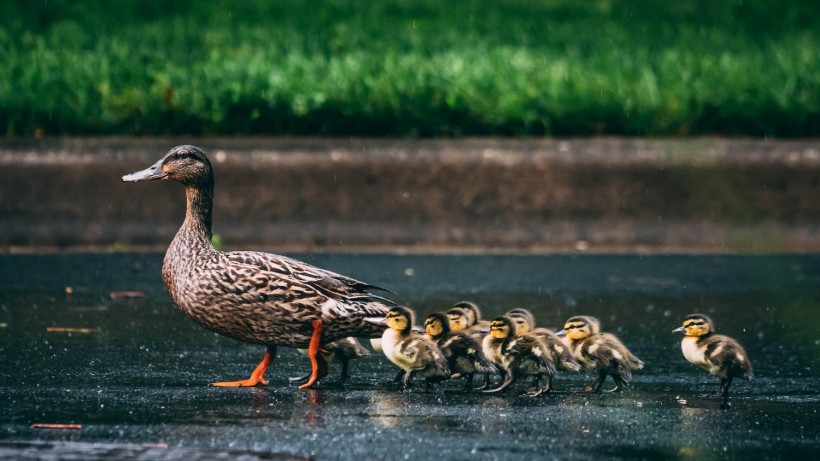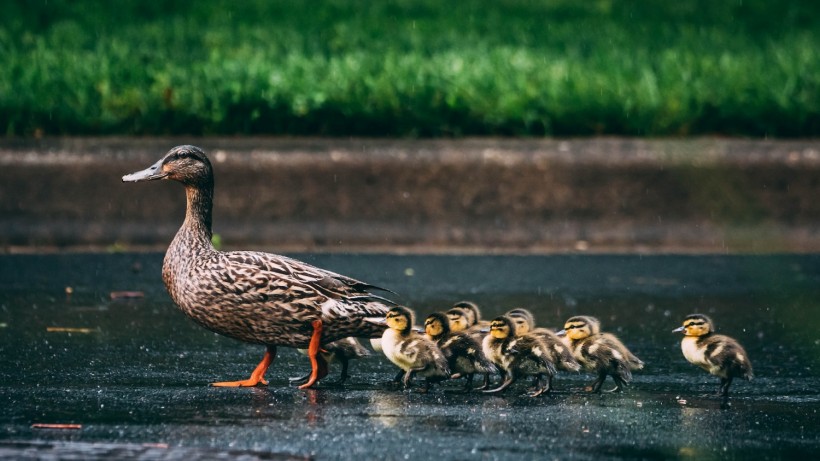[ad_1]
Ducks mostly consist of aquatic birds and can be found both in freshwater and seawater environments where some breeds are observed flying over, including traveling or migrating long distances. Although all ducks have wings, there are still some people who ask “Can ducks fly?”
The answer to the question lies in the linkage between bird flight, including ability, distance, and frequency, and the breed of wild ducks and domestic ducks; experts observed that most of the former can fly, while most of the latter can glide.
Furthermore, the size of a bird is also a crucial factor when it comes to duck flight and aerial mobility. This is the case in some breeds of ducks, and some sources indicate that there are instances when the winged animals choose not to fly since it is not necessary.
Can Ducks Fly?

(Photo : Photo by Vlad Tchompalov on Unsplash)
The answer to the inquiry ‘can ducks fly?’ is a resounding yes but scientists explain that not all ducks or even birds in contemporary times can still take to the skies. The main reason behind this is evolutionary biology. For millions of years, evolution has transformed some of the birds that we know today to be flightless despite having noticeable wings on their sides.
This means that most ducks on Earth can fly but not all of them can, including the flightless domestic duck breed or “farm ducks” such as the American Pekin duck or Long Island Duck.
Based on existing records and observations made on ducks, some breeds choose not to fly and are content to hang out near their coop despite being in a free, open areas like farms.
Meanwhile, some breeds will take every opportunity to fly away from their owners despite being fed and provided with necessity. Lastly, some duck breeds cannot fly at all, as mentioned earlier.
Also Read: Seabird Terns Can Seem To Anticipate Typhoons To Assist in Their Migration
True Flight
Just like with other birds, the mechanism behind duck flight is within the same confines of how avians (in general) are capable of the ability called ‘true flight,’ which pertains to flying against gravity, staying in the air for a prolonged period, and managing to exert thrust in different directions.
In this context, ducks, flying squirrels, and other animals that only glide are not engaging in true flight, which some winged insects are capable of.
How Birds Learn to Fly?
In terms of true bird flight, wild ducks and domestic ducks are still part of an evolutionary lineage of birds that descended from surviving avian dinosaurs during the mass extinction event 66 million years ago.
However, clues about the mystery of how birds learn to fly dates back 150 million to 125 million years ago, a time when a prehistoric avian dinosaur called the Archaeopteryx lived.
According to the University of California University of Paleontology, the discovery of Archaeopteryx lithographica in Germany sheds light on the true flight ability of some of the birds that we know today and this ancient dinosaur is considered by many as the “first bird” due to its wings and feathers.
Related Article: Fireworks Make Wild Birds Sleep Less and Fly 300 Miles Nonstop, Study Shows
© 2024 NatureWorldNews.com All rights reserved. Do not reproduce without permission.
[ad_2]


